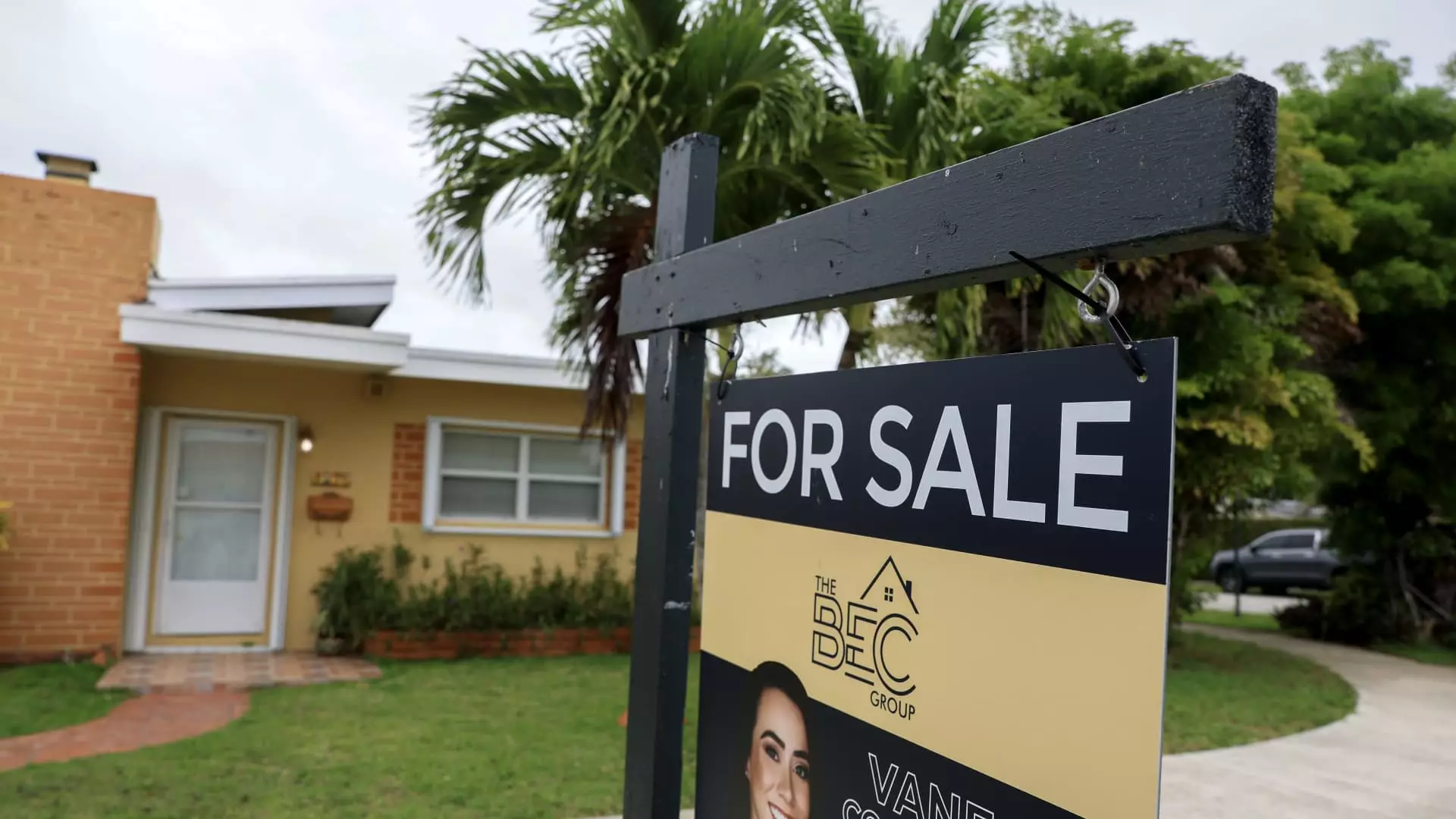In recent weeks, the housing market has become a complicated terrain where slight fluctuations in mortgage rates barely ripple the vast stillness of consumer demand. The most recent reports show that, despite a modest decrease in mortgage rates—from 6.98% to 6.92% for standard 30-year fixed-rate loans—overall mortgage application volumes plummeted by 3.9%. This baffling reality reveals a disconnection between policymakers’ hopes for a burgeoning housing market and the lived experiences of potential home buyers. It appears that homeownership is now seen not just as an investment, but as a precarious gamble in a market riddled with uncertainty.
Refinancing’s Diminishing Returns
The mortgage refinancing sector, long a barometer for measuring consumer confidence and financial fluidity, is experiencing a downturn that is impossible to ignore. A 4% dip in refinance applications stands in stark contrast to a year-over-year increase of 42%. This paradox invites deeper scrutiny: Why are consumers, faced with seemingly favorable rates, hesitant to jump into refinancing? It could be that homeowners are holding their breath, anticipating more substantial rate decreases that may never arrive. The average refinance loan size hitting its smallest mark since July 2024 only amplifies this skepticism, suggesting that even the most cautious borrowers are increasingly becoming disillusioned. One cannot help but wonder if the underlying cause of this hesitation stems from an acute awareness of market volatility rather than a mere price point.
Stagnation Amidst Supply Increase
Compounding the conundrum is the evident disconnect between increased home supply and lackluster sales. With the current housing supply at its highest in five years, one would expect a surge in purchases, yet applications for new mortgages have declined by 4%. The confluence of this supply and tepid demand forms a perfect storm of stagnation that suggests consumers are either waiting for even lower rates or living in despair over inflated home prices. The hope that the influx of properties would revitalize the market seems misguided amidst fierce buyer apathy.
The Larger Implications
To view the data purely through the lens of interest rates and application volumes misses the broader implications of this housing climate. Homeownership, once the quintessential American dream, is morphing into an elusive goal, complicating the aspirations of a generation that values stability and engagement over speculation. The persistence of mortgage rates within a narrowly defined range clearly signals an overarching hesitation among potential buyers to enter a market that feels perilously unreliable. The current trajectory suggests that, rather than leveraging reduced rates as a catalyst for economic mobility, many are retrenching into a defensive posture.
As we peer into the future of our housing market, it reveals deeper shadows of uncertainty rather than bright vistas of prosperity. Homebuyers’ reluctance to engage with mortgages highlights a critical cultural shift, wherein aspirations of homeownership take on a weighty significance—not just as an investment, but as a personal redefinition of stability and security in a volatile economy.

